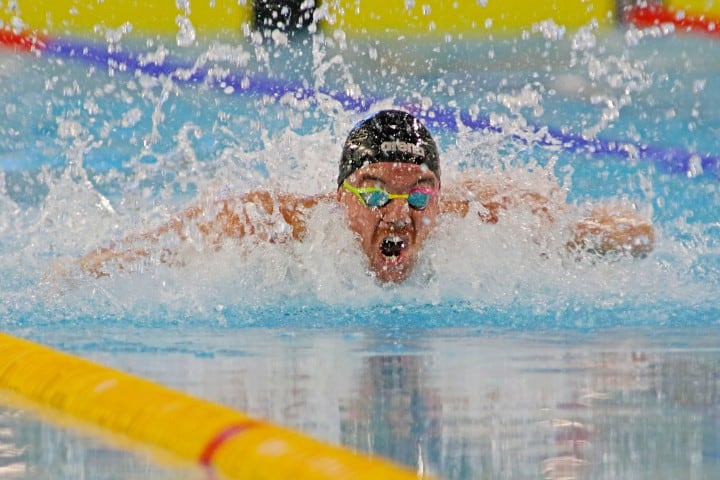Swim Cap Pros and Cons: How To Use Them Properly
Swim caps are used in swimming pools all across the world by amateur swimmers, athletes, and competitive professionals alike. They are made from a wide variety of materials, and each type of material has a different purpose and is suited to a different type of swimmer or swimming situation. Many pools require the use of caps, especially at public venues such as hotels or schools.
WHY DO SOME POOLS REQUIRE THEM?
Different pools have different reasons for requiring caps for swimmers. For some facilities, the main purpose is to protect the pool’s filtration system from an excess amount of loose hair that can clog the filters over time. This is especially a problem when a pool is heavily used on a regular basis.
Other pools have rules requiring the use of swim caps primarily to protect swimmers themselves.
For example, some schools may require it in order to keep students’ hair dry during pool sessions. This cuts down on the amount of time it takes for students to return to class after spending time in the pool. For others, requiring swim caps is a way to protect the ears from heavily chlorinated water or to protect hair from a combination of chlorine and sun.
Finally, in some competitive swimming situations, swim caps are required for the health and safety of the competitors. For example, when competitors are involved in a long swim race, caps may be required in order to protect the head from excessive heat loss. Caps may also be required to reduce the possibility of entangling hair or of drag that could slow down racers. When swimming in open water, some competitors wear brightly colored swim caps so that boaters can easily see them.
WHAT IS A SWIM CAP?
This is a cap that fits tightly over the head and keeps the hair pushed down against the scalp. Caps can be made out of several types of material:
Latex
Latex caps are thin and not very durable. They fit snugly and do not move easily. They are usually among the cheapest
options but can be somewhat difficult to take on and off. Some people are allergic to latex and should not use this type of cap.
Silicone
Caps made from silicone are the most durable and a bit more expensive than latex caps. They are easier to put on and remove and are preferred for competitive swimming because they do not wrinkle. They are so smooth, however, that sometimes they can slip off.
Lycra
Lycra caps are very comfortable to wear and do not squeeze the head. They do not protect the hair very well from chlorine or from water and do tend to slip off after extended exposure to chlorine. They are not suitable for competitive swimming but are a comfortable choice for pools that require a cap to protect the pool filters.
Neoprene
These are by far the most expensive caps and are used frequently in competitive situations. Neoprene is the same material from which diving wetsuits are made, so this type of cap is excellent for competitive situations or for extended swimming in cold water. It can be difficult to put on a neoprene cap, and they are less comfortable to wear than other choices.
THE HISTORY OF SWIM CAPS
The first such caps were made of rubber and were developed in the early 1900s. The main purpose of these caps was to protect the popular women’s hairdo of the day: the permanent wave. This hairstyle was expensive and time-consuming to obtain, so many women wished to protect that investment while swimming.
In the 1960s, it slowly became socially acceptable for men to wear their hair long. The steady increase in long-haired swimmers of both sexes proved hard on the filters of pools, so pool owners began to institute rules requiring the use of caps. Competitive swimmers began using caps regularly in the 1980s.
WHAT ARE THE PROS & CONS?
There are some reasons you should wear a cap while swimming and also some reasons people dislike them. As you consider caps for the public pool, your own pool, the pond, or the sea, think about these pros and cons to wearing them:
Pros
- Filtration systems in the pool work better and last longer with less loose hair in the pool
- Your hair won’t get in your eyes when you swim or come up out of the water
- Certain caps will keep your hair dry
- Other caps will let your hair stay wet
- Filtration systems in the pool work better and last longer with less loose hair in the pool. Even if the pool isn’t yours, everyone wins when pool maintenance is easier and less expensive. Plus, everyone will enjoy the pool more when there’s not a lot of hair floating around in it.
- Your hair won’t get in your eyes when you swim or come up out of the water. This is one of the more annoying things that can happen when you go swimming, particularly if you have long hair. If you’ve gotten tired of constantly coming up out of the water and squeezing your eyes tightly shut while you use your hands to pull all the hair out of your eyes, then you should use a cap that can help you avoid this issue. You’ll also be able to hear better!
- Certain caps will keep your hair dry. If you have long hair, hair that takes a long time to style, or it’s cool outside, you might really appreciate not having to wash and dry your hair after every swimming session.
- Other caps will let your hair stay wet If you want your hair out of your eyes but also want to stay cool, other styles of the cap will let your hair get wet and keep you from overheating.
- Caps can keep you warm. If you’re swimming during the cold months, you might enjoy a nice, warming neoprene cap.
Con
- They can be annoying if they don’t fit right
- They can be annoying if they don’t fit right. You can largely avoid this problem by making sure you get the right type of cap, but they can actually interfere with visibility and hearing if they don’t fit properly or slide around a lot on your head.
- You might get too warm. Again, this can be fixed by making sure you choose the right style and material for your swimming session. If you don’t, you could find yourself overheated.
- They do cost money. Obviously, it is going to cost something to buy a cap. The cheaper the cap, the more likely it will split or break and have to be replaced regularly.
HOW TO USE THEM PROPERLY
Using your swim cap properly starts with choosing the right size. These head coverings come in three general sizes: small, medium, and large. To make your choice, measure the circumference of your head. You should make the measurement just above your eyebrows and with your hair twisted or tied up as it
will need to be when wearing the swim cap. If your head is less than 22 inches, get a small. If your head is between 22 and 23.5 inches, go for a medium. If your head is larger than that, get a large cap.
Once you have the right size, follow these steps to get your swim cap on correctly:
- Tie or twist up your hair. If you have long hair, you need to get it up so all of it will fit under the cap. You may use a ponytail or a bun, but be sure to put your hair up a bit higher than you normally would, as the cap itself will press down on your hair and lower it. If your hair is extremely long, try twisting it up into the cap as you put it on, instead. This way, you can avoid having a sharp, possibly painful bulge right at the back of the head.a
- Get your hair wet. The next step is to get your hair a bit wet. This will make it a lot easier to slide the cap over your hair. Dry hair tends to get caught in latex, neoprene, or the other materials that caps are made from. If you want to make it even easier, consider putting a layer of conditioner over the outside of your hair.
- Pull the cap open on the short side. The cap will not be a perfect circle. One side will be longer, and this is the side meant to run from the front to the back of your head. The shorter side is meant to cover the sides. Pull the shorter sides apart to get the most space possible. Some people prefer to wet the cap before attempting to put it on, but this is a personal choice.
- Pull the cap onto your head. With your head tilted forward, put the front of the cap to the forehead. Then continue to stretch the short sides with your hands as you pull it back over the rest of your head.
- Adjust the cap and seal. To help the cap do its job effectively, tuck stray hairs up into it and make sure it is positioned so as to cover the hairline at your forehead while not sitting on top of your eyebrows.
CONCLUSION
While there are some drawbacks to wearing a swim cap, there are some great benefits, too. The important thing is to choose the right material and size and then practice putting it on. Soon it will become second nature.



